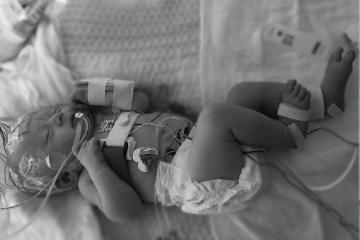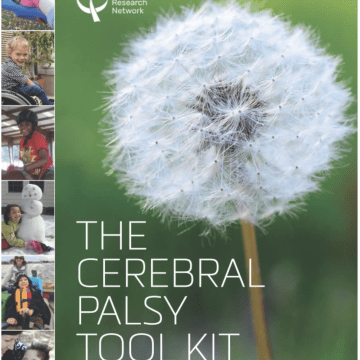
Diagnosis of CP can and should happen as early as possible.
Cerebral palsy, except in its mildest forms, is often evident in the first year of life and it’s important to get a diagnosis as early as possible in order to improve long term outcomes. Early diagnosis begins with your child's medical history and could involve your doctor doing a combination of neuroimaging and neurological, and motor assessments.
-
Get the Facts
Screening & Diagnosis of Cerebral Palsy Diagnosing cerebral palsy (CP) at an early age is important for the long-term outcome of children and their families.
-
Expert Videos
What is the General Movements Assessment? 
-
Expert Videos
What Does a Diagnosis of Cerebral Palsy Mean? 
-
Expert Videos
How do you Diagnose Cerebral Palsy? 
-
Expert Videos
Cognitive Assessments for Infants With Cerebral Palsy 
-
-
-
-
Stories
Take a Spin 
-

Cerebral Palsy Toolkit: From Diagnosis to Understanding Written by parents and clinicians, this helpful toolkit is designed to provide support and resources after the initial diagnosis of CP and beyond. -

Cerebral Palsy: A Complete Guide to Caregiving (A Johns Hopkins Press Book) For three editions now, a team of experts associated with the Cerebral Palsy Program at the Alfred I. duPont Hospital for Children have shared vital information through this authoritative resource for parents, who will turn to it time and time again as their child grows.
-
CPF Live
CPF LIVE! with Mary Lauren Neel, MD: Life after the NICU CPF Executive Director Rachel Byrne and Dr. Mary Lauren Neel, MD discuss Life after the NICU.
-

Early, Accurate Diagnosis and Early Intervention in Cerebral Palsy: Advances in Diagnosis and Treatment. Early diagnosis begins with a medical history and involves using neuroimaging, standardized neurological, and standardized motor assessments that indicate congruent abnormal findings indicative of cerebral palsy. Clinicians should understand the importance of prompt referral to diagnostic-specific early intervention to optimize infant motor and cognitive plasticity, prevent secondary complications, and enhance caregiver well-being. -

Network Implementation Decreases Age at Cerebral Palsy Diagnosis Early diagnosis of cerebral palsy (CP) is critical in obtaining evidence-based interventions when plasticity is greatest. -

Comparing Parent and Provider Priorities in Discussions of Early Detection and Intervention for Infants With and at Risk of Cerebral Palsy Receiving early diagnoses or high‐risk for CP classification is a parent priority. Alignment between parents and providers exists for International Classification of Function domains of body functions/structures and activity, but less for those of environment, personal, and participation.
Receiving early diagnoses or high risk for CP classification is a parent priority. Early diagnosis, when given in a manner that is respectful, truthful, and responsive to parental need, can result in increased familial engagement and hope.














